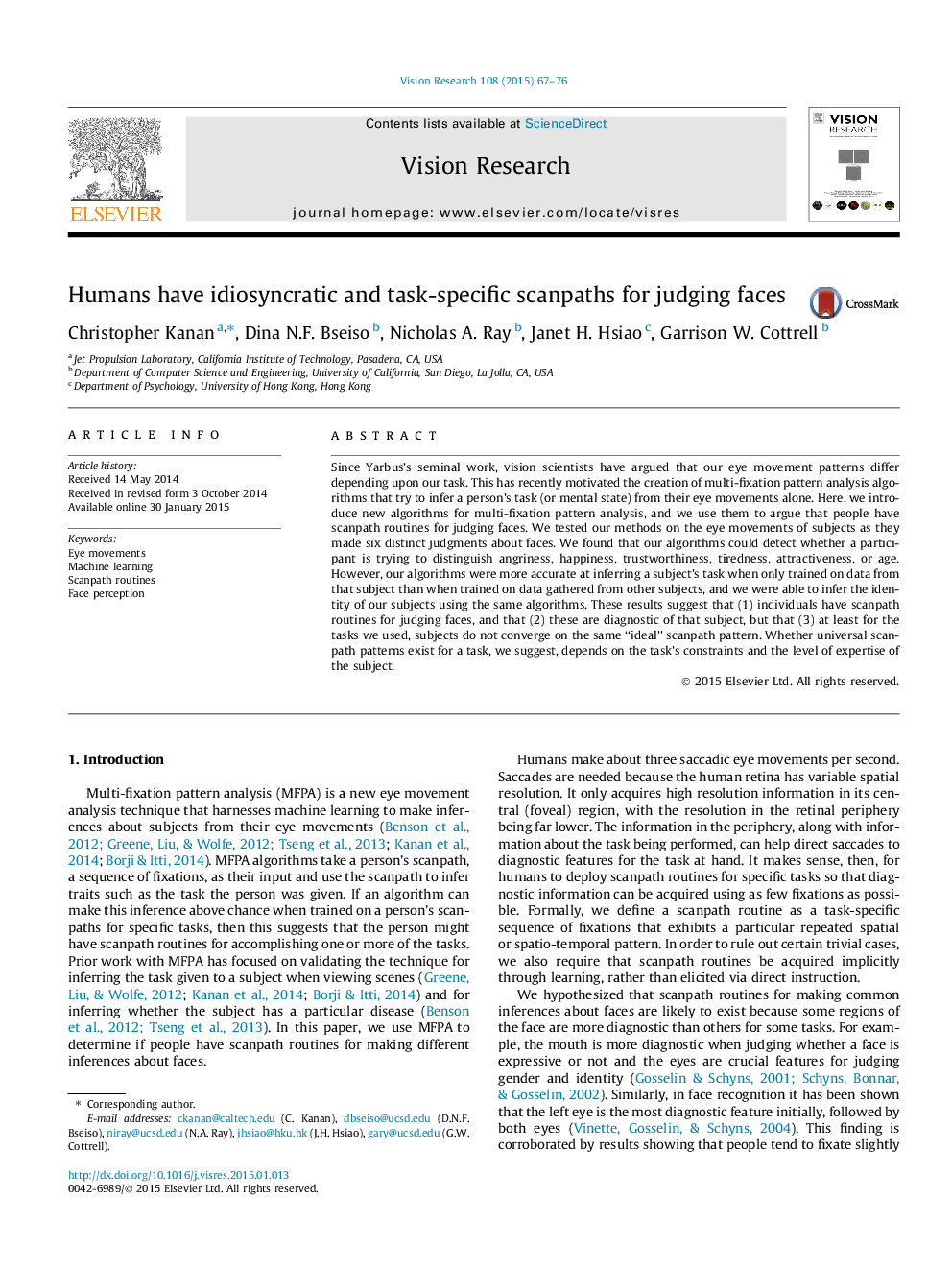| Article ID | Journal | Published Year | Pages | File Type |
|---|---|---|---|---|
| 4033696 | Vision Research | 2015 | 10 Pages |
•Algorithms can infer from a person’s eye movements what task they are doing.•Observers have scanpath routines for making judgments about faces.•For judging faces, people have idiosyncratic scanpath routines.
Since Yarbus’s seminal work, vision scientists have argued that our eye movement patterns differ depending upon our task. This has recently motivated the creation of multi-fixation pattern analysis algorithms that try to infer a person’s task (or mental state) from their eye movements alone. Here, we introduce new algorithms for multi-fixation pattern analysis, and we use them to argue that people have scanpath routines for judging faces. We tested our methods on the eye movements of subjects as they made six distinct judgments about faces. We found that our algorithms could detect whether a participant is trying to distinguish angriness, happiness, trustworthiness, tiredness, attractiveness, or age. However, our algorithms were more accurate at inferring a subject’s task when only trained on data from that subject than when trained on data gathered from other subjects, and we were able to infer the identity of our subjects using the same algorithms. These results suggest that (1) individuals have scanpath routines for judging faces, and that (2) these are diagnostic of that subject, but that (3) at least for the tasks we used, subjects do not converge on the same “ideal” scanpath pattern. Whether universal scanpath patterns exist for a task, we suggest, depends on the task’s constraints and the level of expertise of the subject.
